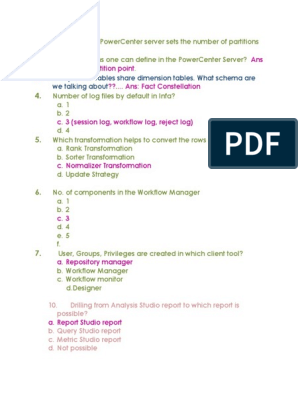0% found this document useful (0 votes)
54 views16 pages2-Advanced SQL Query Optimization 60 MCQ
Uploaded by
adeel ashrafCopyright
© © All Rights Reserved
We take content rights seriously. If you suspect this is your content, claim it here.
Available Formats
Download as DOCX, PDF, TXT or read online on Scribd
0% found this document useful (0 votes)
54 views16 pages2-Advanced SQL Query Optimization 60 MCQ
Uploaded by
adeel ashrafCopyright
© © All Rights Reserved
We take content rights seriously. If you suspect this is your content, claim it here.
Available Formats
Download as DOCX, PDF, TXT or read online on Scribd
/ 16
















































































